![]()
![]()
![]()
Use LEFT and RIGHT arrow keys to navigate between flashcards;
Use UP and DOWN arrow keys to flip the card;
H to show hint;
A reads text to speech;
36 Cards in this Set
- Front
- Back
|
What is the most common cause of acute liver injury?
Alcoholic hepatitis: Age Presentation (speed) of jaundice AST ALT AST/ALT ratio |
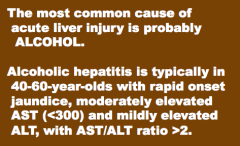
|
|
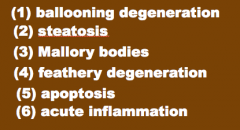
What can cause all the these? |
Alcohol can cause all of these All of these can be seen in acute liver injury |
|
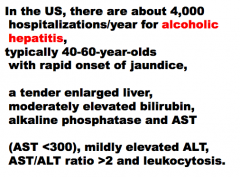
|
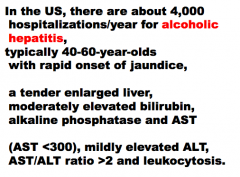
|
|
|
What are three other common manifestations of alcoholic hepatitis? (blood, brain, heat) |
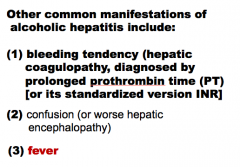
|
|
|
AST/ALT ratio of >2 suggests what?
What is a common exception to this exception? |
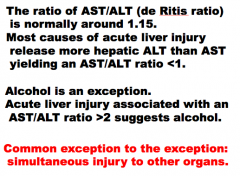
|
|
|
What type of generation is common with all sorts of acute liver diseases?
What is the mechanism? Is it reversible? |
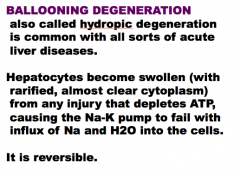
|
|
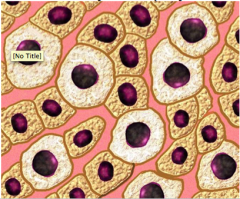
Which hepatocytes have ballooning degeneration? |
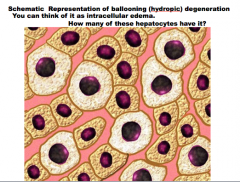
|
|
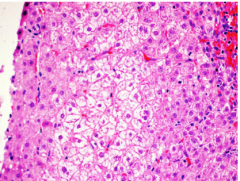
What type of degeneration is shown? |
Ballooning => empty cytoplasm |
|
|
Can alcoholic hepatitis cause SIRS (like pancreatic)? |
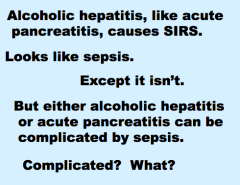
|
|
|
Fatty change or fatty degeneration, the accumulation of lipid in hepatocyte cytoplasm. What is this?
What are the two types? |
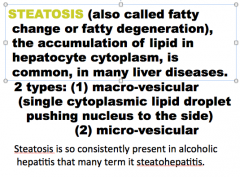
|
|
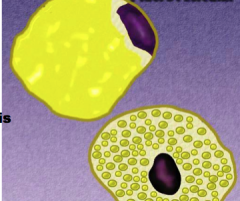
Which type of steatosis in each? |
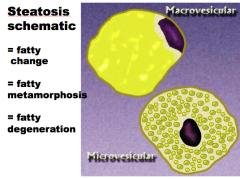
|
|
|
Macro-vesicular steatosis It is the more common form of _____, and is seen in It is _____. |
Macro-vesicular steatosis It is the more common form of steatosis, and is seen in It is reversible. |
|
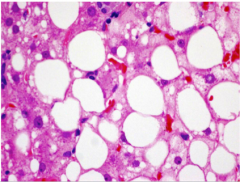
What type of steatosis? |
Macrovesicular |
|
|
Which type of steatosis is due to impaired mitochondria beta-oxidation of fatty acids for ATP synthesis?
In which to situations is it seen? |

|
|
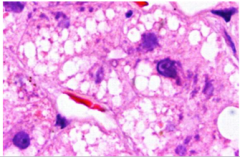
Is micro vesicular more or less common than macro vesicular? Reversible? |
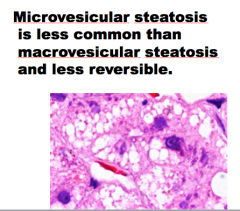
|
|
|
What type of steatosis is associated with greatly enlarged defectives mega-mitochondria? |
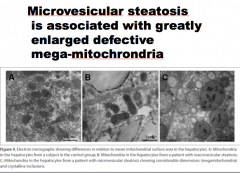
|
|
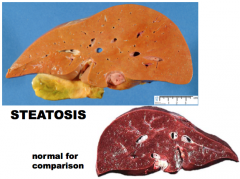
|
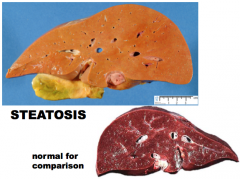
|
|

What type of degeneration do they have and what are they surrounded by? |
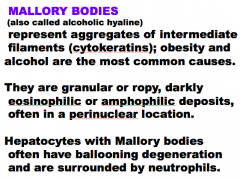
|
|
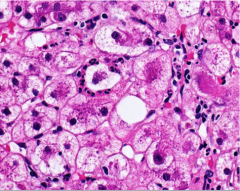
What three things are shown? |
Malloy bodies, ballooning degeneration, and neutrophils. |
|
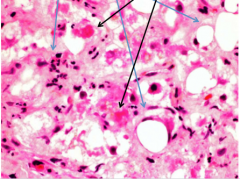
Identify steatosis, Mallory bodies, and neutrophils. |
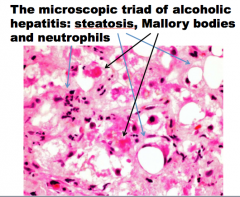
|
|
|
With severe intracellular |
With severe intracellular |
|
|
_____ causes a liver disease _____ tends to be milder than |
Obesity causes a liver disease NASH tends to be milder than |
|
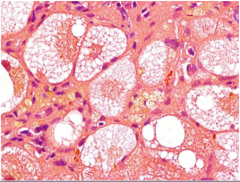
What type of degeneration? |
Feathery |
|
|
Feathery degeneration is Because bile transport is |
Feathery degeneration is Because bile transport is |
|
|
Biliary obstruction by ____, ___ is elevated by both biliary |
Biliary obstruction by stones, Gamma-glutamyl-transferase |
|
|
_____ is the most common form of cell death in hepatic viral infections. Apoptotic bodies of dead hepatocytes were first (and are often referred to as |
Apoptosis is the most common form of cell death in hepatic Apoptotic bodies of (and are often referred to as |
|

Three names for apoptotic cells. |
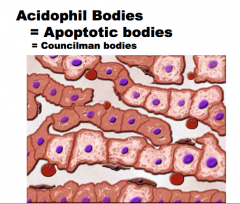
|
|
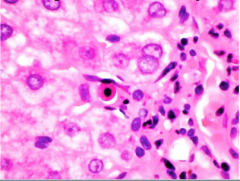
What causes a shrunken cell with condensed cytoplasm + nucleus follow by nuclear breakup? |
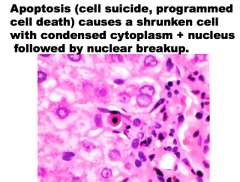
|
|
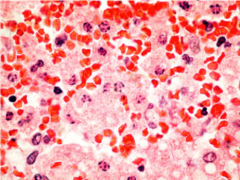
What is shown here? |
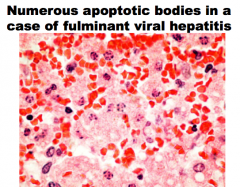
|
|
|
Both apoptosis and garden |
Both apoptosis and garden |
|
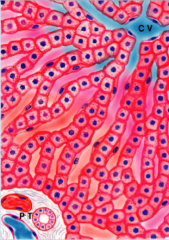
|
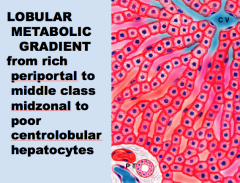
|
|
|
The lobular gradient is reflected in multiple For instance, in _____-sided heart failure, The increased _____ pressure results in |
The lobular gradient is reflected in multiple For instance, in right-sided heart failure, The increased centrolobular pressure results in |
|
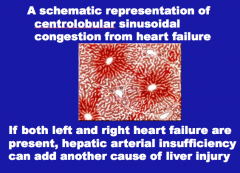
|
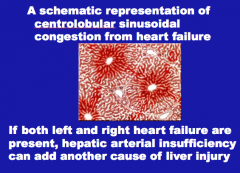
|
|
|
In ___-sided heart failure |
In right-sided heart failure |
|
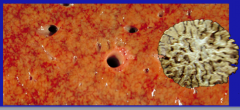
What are two components of the liver in heart failure? |
Passive congestion of the liver Nutmeg |
|
|
Severe heart failure causes |
Severe heart failure causes |

